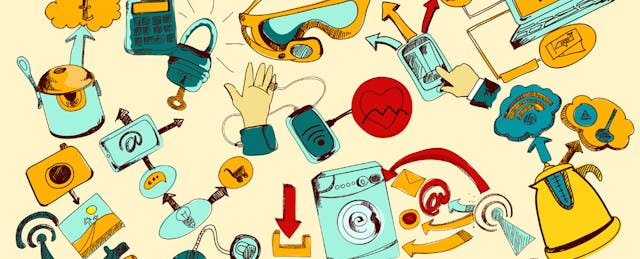It’s getting harder to go more than a week perusing technology websites without coming across a reference to the “Internet of Things”—a term broadly referring to the idea that objects like household appliances will be embedded with sensors that collect and transfer data and alter their activities without direct human input. For example, a noise sensor might determine exactly who is in the house and share that data with the thermostat, which then sets itself to the preferred temperature of those who are present.
Can a web of connected sensors extract and analyze data that proves to be meaningful for learning?
A new study by a team from the University of Belgrade takes a crack at answering this question in the context of a university lecture. The researchers used sensors to measure different aspects of the classroom environment—including temperature, humidity and carbon dioxide levels—and attempted to link these factors to student focus. The question was whether sensors could determine whether these factors were optimal for learning.
Another set of sensors measured noise in the room. A headset worn by the lecturer collected data on the lecturer’s voice, and a microphone on a smartphone collected data on the overall noise level in the room. Specifically, these sensors looked at size, range, and variation of voice frequencies (i.e. Hz measurements on the audio wave spectrum), which the researchers transformed into a series of complex variables that were designed to be representative of things like how many people are talking at a given time, and how much this varies over the course of the class.
Student focus was measured using self-reports; at any time students in the lecture could click “yes” or “no” on a webpage to report whether or not they were able to concentrate. The researchers then sliced the lectures into 30-second segments and examined the difference between segments where 90% of the responses were “yes" and segments where 90% of the responses were “no.” Overall, the sample included fourteen 90-minute lectures attended by 197 students.
The researchers found a number of variables for which there was a statistically significant difference between the “focus” and “no focus” segments, and further analysis using machine learning algorithms found that five factors improved predictions about whether students were focused at a given time. Among the things associated with more student focus were temperature (a combined index of temperature and humidity) and carbon dioxide levels. These findings were relatively unsurprising; studies have found that classroom temperature and air quality have an effect on academic outcomes.
The researchers also found three aspects of classroom noise were associated with more focus. Specifically, increased focus was associated with:
- higher acoustic frequency in the lecturer’s voice, which the researchers believe shows greater motivation in the speaker;
- a larger deviation from the mean frequency of room noise, which the researchers believe is likely to occur when the room is quiet except for the lecturer’s voice; and
- a high standard deviation of number of autocorrelation peaks, which the researchers believe is associated a high mixture of segments with and without voices.
All of these correlational findings are very preliminary, but ultimately data like this could be automatically collected and analyzed, and then packaged to a teacher in plain-language suggestions. Perhaps the noise data suggests the teacher should be raising his or her voice more often or that periods when the teacher isn’t talking are too infrequent. It would be the teaching equivalent of a Major League Baseball player learning from video analysis that his hips might be flying open on backdoor breaking balls.
The quality of automated data collection is still not very good, but with better sensors, improving analytical programs, and cloud storage, one day a “smart” classroom could exist that collects, analyzes, and packages data for teachers to use. Such a classroom is not exactly over the horizon, but it’s not something that requires much beyond what we currently have today. It just needs for those things to get better and cheaper.
More broadly, the study highlights how the classroom is full of wondrous data. And if that data was collected, analyzed, and given only to teachers, with no stakes attached, it might help teachers get better at their craft. Nobody should rate a teacher for not altering his or her tone enough, but it might be useful for the teacher to know what the data says.


